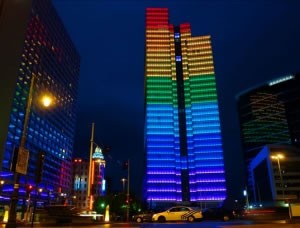Scientists working at the Fraunhofer Institute for Telecommunications (Heinrich Hertz Institute) in Berlin, Germany have successfully developed a Wireless Local Area Network (WLAN) capable of speeds up to 800Mbps. They used it to send full HD movies to notebooks, smartphones, and other devices, according to Slashgear. Don't think that's much of a big deal? What if I told you the main component was normal red, green, blue, and white Light-Emitting Diodes (LEDs)? That's right; now I've got your attention.
With a little bit of tinkering, the researchers turned regular LEDs, which these days can be found in everything from flashlights to Christmas tree lights, into an affordable and fast wireless network. The LEDs, placed on the ceiling, have a coverage area of about 10 square meters. They essentially blink on and off extremely fast to transmit data, controlled by a simple modulator. The signals are picked up by a receiver, which can be placed anywhere within the coverage radius.
The technology could prove useful in locations where traditional wireless networks are banned or cannot function. Unfortunately, since visible light like this cannot penetrate through walls and can be easily blocked by moving objects, including people, this is more of a research demonstration than a viable solution.
The advantages are obvious: the lights can be modified to suit networking at little cost and with only minor adjustment, they can be used in places where traditional radio or wired networking is less feasible, and there's also no limit on the number of recipients of the data. Gadgets wanting to receive the signal need to be outfitted with a simple photo diode, so all you need to do is buy as many diodes as you have devices. While this line-of-sight technology won't replace your standard Cat 5 or WiFi equipment anytime soon, it may one day be used in more public places, such as airplanes or hospitals.
